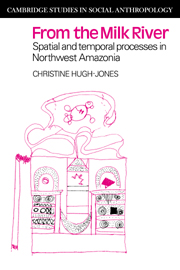Book contents
- Frontmatter
- Contents
- List of figures, tables and maps
- List of myths
- Preface
- Acknowledgements
- Orthography
- 1 Introduction
- 2 Social structure
- 3 The set of specialist roles
- 4 Kinship and marriage
- 5 The life-cycle
- 6 Production and consumption
- 7 Concepts of space–time
- 8 Conclusion
- Appendix 1 Named groups
- Appendix 2 Kinship terminology
- Works cited
- Index
- CAMBRIDGE STUDIES IN SOCIAL ANTHROPOLOGY
2 - Social structure
Published online by Cambridge University Press: 07 October 2009
- Frontmatter
- Contents
- List of figures, tables and maps
- List of myths
- Preface
- Acknowledgements
- Orthography
- 1 Introduction
- 2 Social structure
- 3 The set of specialist roles
- 4 Kinship and marriage
- 5 The life-cycle
- 6 Production and consumption
- 7 Concepts of space–time
- 8 Conclusion
- Appendix 1 Named groups
- Appendix 2 Kinship terminology
- Works cited
- Index
- CAMBRIDGE STUDIES IN SOCIAL ANTHROPOLOGY
Summary
Introduction
The character of Vaupés social structure is such that no model can come close to the ‘facts’ as revealed by field research. The anthropologist's social structure must be pieced together from a muddling mass of statements that Indians make about kinship connections, group names, ancestral derivations, linguistic affiliations, geographical sites and so on. These statements employ named descent groups, named languages and named geographical features, and the categories based on these different criteria do not necessarily coincide with one another. Besides, changing identity, conflicting ideas about group membership and group status, and also the fission and fusion of groups are all in the very nature of the traditional system. It may well be that those groups living in the Pirá-paraná region, on the edge of the Vaupés culture area, are less stable than those living on the River Vaupés itself or on its principal affluents.
Of course, similar reports of uncertainty and flux in indigenous classification of groups are far from uncommon in anthropological literature, and it has often been possible to represent these potentialities for change by means of simple segmentary models of social structure. However here, as we shall see, this would not be a very satisfactory course because, at an ideal level, the internal organisation of the most important groups is fixed: there are divisions into five sub-units each of which possesses a specialist occupation.
- Type
- Chapter
- Information
- Publisher: Cambridge University PressPrint publication year: 1980

